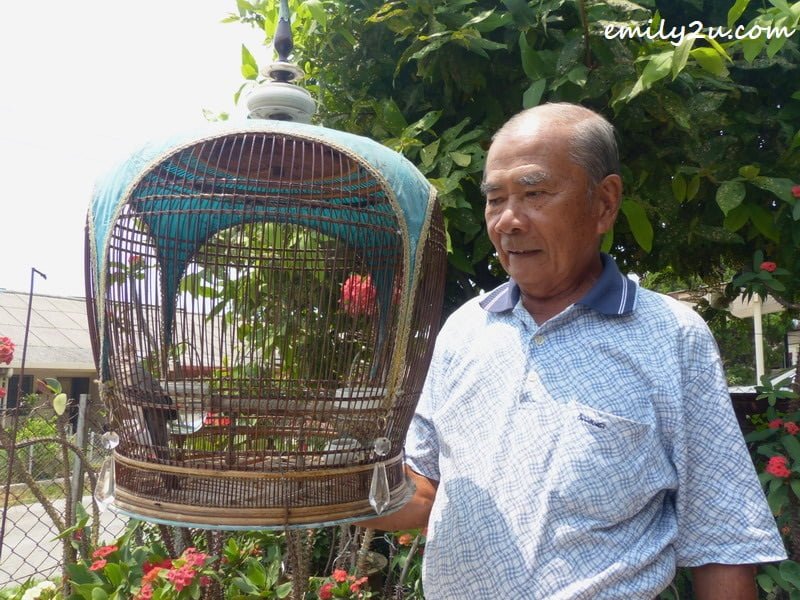Judging Feathered Singers
As only one of two judges for merbok (zebra dove) singing competitions in Ipoh, Wong Kim Pang, 76, is kept busy with the monthly competitions that are held at a field in Menglembu as part of the panel of judges.
For retired civil servant Wong, whose interest in merbok began at the age of 16 in 1955 when the hobby of rearing birds was a common pastime, this year marks his sixtieth year of involvement with the bird, which includes being the organiser of the first merbok singing competition in Ipoh in 1970 and founding the Perak Merbok Club a few years later. Like he said, “Once a merbok lover, always a merbok lover.”
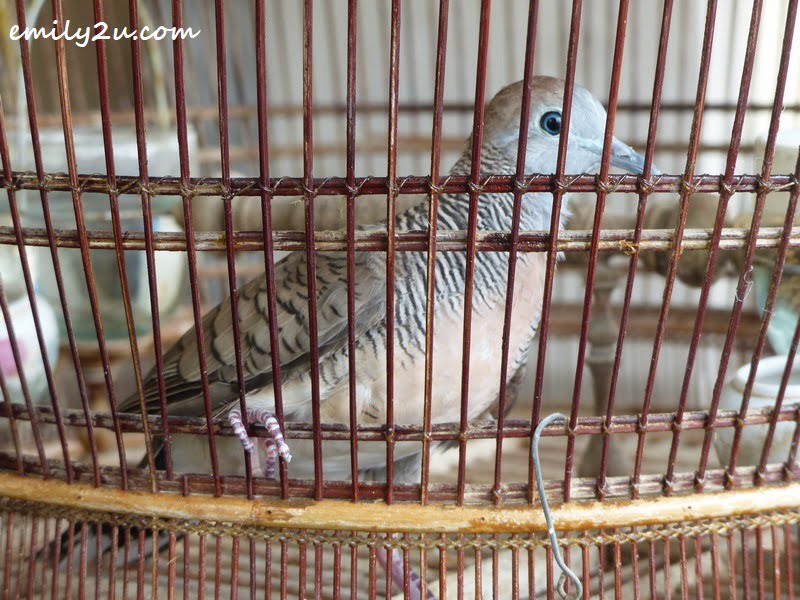
As a competition organiser, Wong faced difficulty engaging judges and resorted to inviting them from neighbouring countries. So, he took the initiative to qualify as a judge himself through experience and training, attending almost every competition held not only in Malaysia but also Singapore, Thailand and Indonesia. Since then, Wong has judged an uncountable number of competitions.

A merbok competition can easily attract hundreds of entries, usually male birds, from eager hobbyists, for either one of these categories: Big sound bird, Middle sound bird, Small sound bird and Young bird for birds below six months old.
To an untrained ear, one merbok singing is no different from another. However, for an experienced judge like Wong, his sharp ears easily pick up the singing from every single bird, even if he is surrounded by them, as the 20 feet high poles are just about 15 to 20 feet apart.

Explaining the judging system in Malaysia, he said, “A good singing bird must be able to produce four basic steps: the starting note (eow), the middle sound with at least two variations (ke-tak) and the ending sound (gong). The louder the ‘gong’, the better it is. Unfortunately, that’s not all. A good singer must also be able to carry a melody. All four sounds must be balanced, which makes listening to the bird pleasing to the ears.”
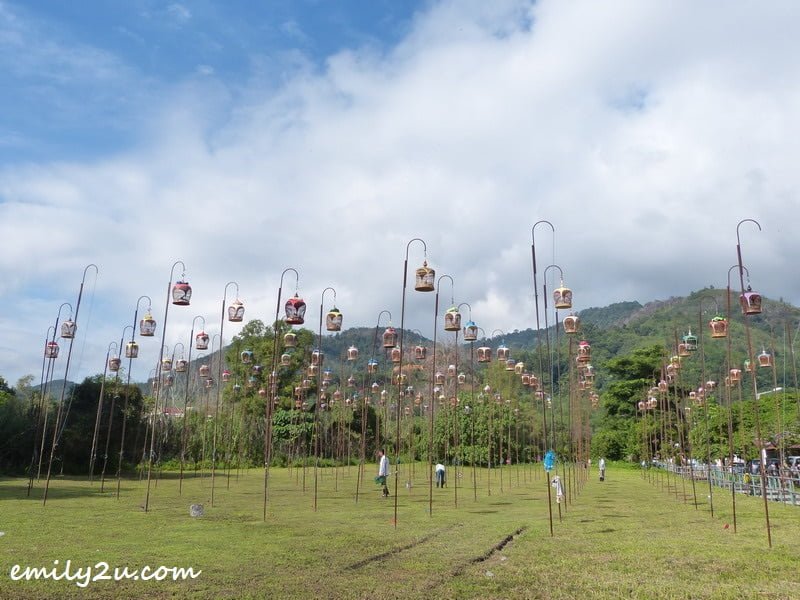
In a standard merbok singing competition, there are four judges, who each can award a maximum of a hundred points per bird; twenty points per step and melody, except for the ending sound, which is worth forty points. The winning bird is the one with the highest score after points from three judges who have given the best marks are tabulated. Similar to many other competitions, maximum points are hardly awarded, therefore, a bird which achieves 85 points is considered one of the best.
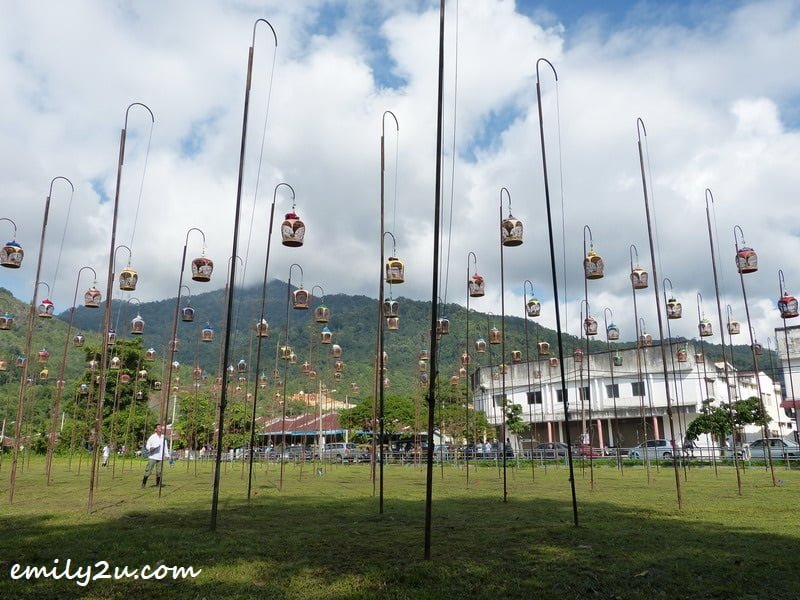
The real value of a merbok is virtually priceless for someone who appreciates the beauty of its singing because every bird has an individual, unique voice that cannot be duplicated or replicated. This value increases with each competition it wins.
It is not surprising that a good singing bird is very expensive. A Class A bird has a price tag of RM30,000 or more, compared to a Class C bird, which can command RM10,000 “only”. Of course, unclassified birds are priced way cheaper.

For new merbok hobbyists, they should bear in mind that not all birds can sing. Obviously, the more expensive the bird is, the better it sings. In any case, birds have to be trained and one of the proven ways is to hang it up on a pole as often as possible alongside other birds for exposure. Some owners believe that by force-feeding it with cili padi (bird’s eye chilli pepper), the bird would be more hardworking in its singing practice.
Just like every other pet owner, those who keep the merbok have to be similarly dedicated to caring for their birds, from providing clean water and good feed to cleaning their cages and even bathing them regularly. A bird that is well cared for can live up to thirty years.
Despite all these efforts, don’t be surprised if a merbok never sings! After all, a good singing voice is a natural-born gift. The owner would be lucky if his bird is just a slow developer!

Wong noticed that most hobbyists think that chances of owning a good singing bird increases with the quantity of birds they keep. He said, “That’s actually a wrong approach. It’s good enough to own one or two quality birds and put in time to nurture them to be better singers.”
Although Malaysia boasts a respectable number of merbok hobbyists and breeders, it is an industry by itself in Southern Thailand. Shared Wong, “With at least 600,000 breeding pairs, it’s a real money generator. It’s no wonder that some of the best birds are Thais. To my knowledge, a prize-winning bird was sold to a Singaporean for RM98,000 while another to a Malaysian for RM40,000.
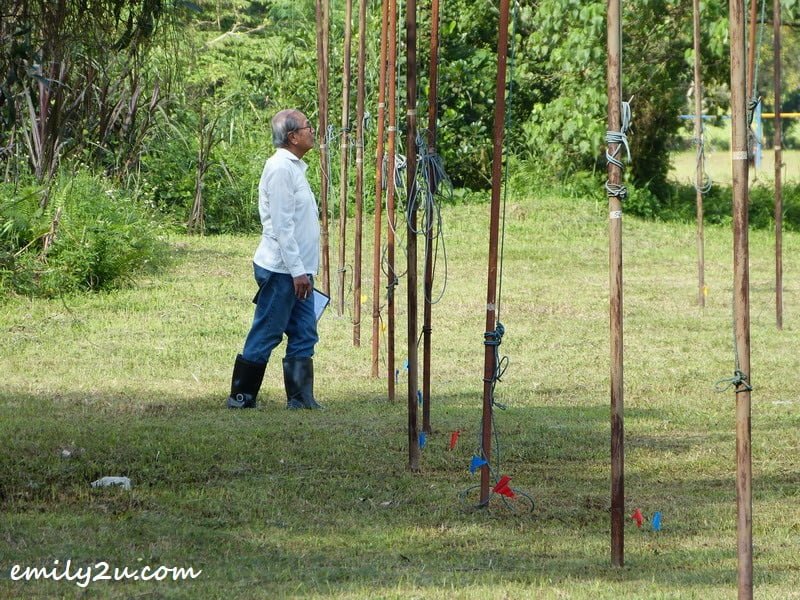
“All the merbok birds that are commercially bred in Thailand are tagged with a number code and registered at birth with their hatchery. In the event that any of these birds emerge as champion, its lineage can be easily traced back to its hatchery. Thus, the breeder becomes famous for producing top class birds and become known to merbok hobbyists and potential buyers.”
Note: An edited version of this article [Judging Feathered Singers] was published as cover story on 3rd August, 2015, in The Malay Mail.
Note: View larger images by clicking on an image once this page has completely loaded. Then navigate by clicking on the right or left side of image.














